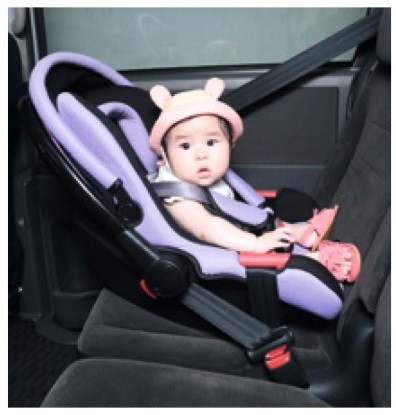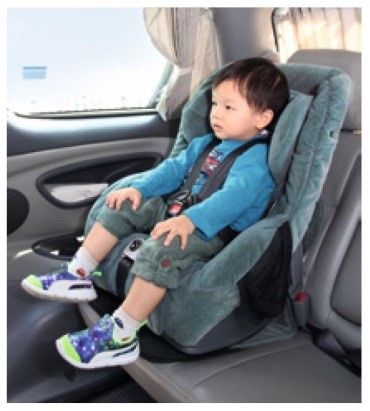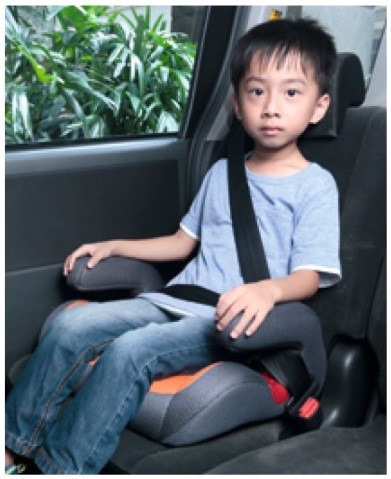
Children under the age of 3 must be restrained by an approved child restraint device when travelling in the front seats of a private car, private light bus or goods vehicle. The requirement also applies to those children travelling in the rear seats of private car when such device is available for use.
Other young child passengers (aged 3 and above) travelling in private car should also use child restraint device to enhance the protection, if available. If child restraint device is not available, they must be restrained by seat belts when travelling in private cars.
Child restraint device must be correctly and securely fitted to the vehicle in accordance with the manufacturerʼs instructions. Always ensure that your children are fastened properly in the child restraint device.
A child must not be held in arms or allowed to sit on the lap of a front seat passenger. In an accident, the child would be crushed between the passenger and the vehicle dashboard or thrown out of the vehicle.
If children are in someone elseʼs car or if you are carrying a lot of children, child restraints may not be available. In that case, children must wear seat belts instead of not being restrained at all.
Young children should be placed in the rear seats and approved restraining devices appropriate to their age and size should be used.
Child restraint device

Up to 12 months (or babies weighing under 9kg who cannot sit up by themselves)
They should be carried in the rear of the car lying down in a carrycot or infant carrier. If the carrycot is made for use in a car, fix it on the rear seat using the restraining straps provided and/or the appropriate anchor points in accordance with the manufacturer's instructions, and secure the child in the carrycot. If the carrycot is not made for use in car, place it across the car with the baby's head in the middle of the car. The carrycot should be held on the rear seat by special carrycot restraining straps. If this is not possible, the cot should be placed on the floor, wedged between the front and rear seats. A folded blanket will help to level the floor or wedge the cot in place. Fasten a cover over the carrycot to help stop the baby from being thrown out.

9 months to 4 years (or children weighing 9 – 18kg who can sit up by themselves)
An appropriate child safety seat is the best. The child is held in the seat by a harness. Follow the manufacturerʼs instructions on fixing the child seat to the car structure.

3 to 12 years (or children weighing 15 - 36kg)
Use either a child harness made of a lap strap and two shoulder straps; or a booster seat together with the ordinary seat belt, which also has an extra strap running behind the child that acts as a guide to change the lie of the diagonal belt.
Over 12 years (or teenager weighing above 36kg)
The ordinary seat belt could be used.